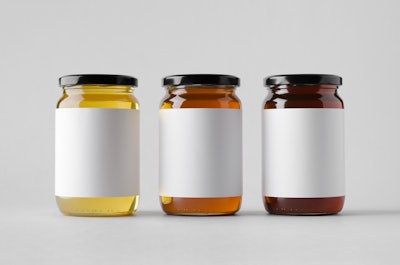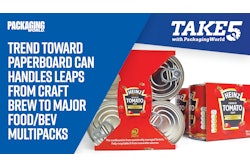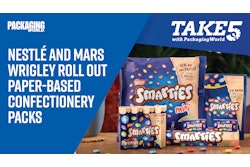A company undertaking a package redesign project is making two statements: it regards packaging as a competitive tool, and it seeks greater leveraging of that tool. Acceptance of the first statement mandates subscription to the second. Package redesign projects are conducted under a variety of scenarios, of varying validity, with some being misguided.
Solution for disappointing sales. A package redesign can spur sales only if the current design is the problem. Sales, however, are influenced by a variety of factors. Among them are product, promotion, pricing, and distribution—each having multiple variables. Identifying a solution out of a welter of possibilities is painstaking work. The ever-present temptation is to conveniently incriminate the package, a readily identifiable physical entity. The temptation can be worsened by the rationale, “The package, as our point-of-purchase lure, apparently is underperforming.”
The opposite of the above-described shortcut in decision-making is the elimination of all reasonably foreseeable other possibilities. It makes sense to start with the product. A packaged product is a whole comprised of two interdependent components: the product and the package. Package design can be a tiebreaker, favorably differentiating among offerings that are otherwise comparable/substitutable. Something that package design cannot do is compensate for product deficiencies. Package design with high shelf-impact will, at best, contribute to trial purchases, but won’t generate repeat purchases if the product is flawed.
The degree to which sales have been disappointing and the timeline across which it has occurred can be instructive. A deep, sudden drop in sales, for example, might bespeak an online cause. Given the power of social media, in particular, a negative post, tweet, video, etc., gone viral, can be disruptive. A company without a strategy for monitoring its internet presence might be a victim of such disruption, all while pursuing unassociated solutions, such as package redesign.
Brand manager branding. Tasked with growing the brand, or, at least, preventing its dilution, brand managers are susceptible to the siren call of package redesign. A package redesign can be achieved within the typically short tenure of a brand manager. Package redesign affords the brand manager the opportunity to demonstrate initiative, with the likelihood of having moved to another position by the time the results can be assessed.
No ill-motives are being ascribed to brand managers in this assessment. Nonetheless, good-faith intentions still can be misguided. One such intention is to achieve something positive with minimum risk, even in the absence of an identified problem. The thinking goes, “Nothing radical, mind you, so what harm can a tweak do?” For starters, plenty, because an inconsequential change wastes time and resources. Advice to brand managers regarding package redesign: just because you can, doesn’t mean that you should.
PACK EXPO Las Vegas and Healthcare Packaging EXPO (Sept. 27-29, Las Vegas Convention Center) will reunite the packaging and processing community. With over 1400 exhibitors, no other event in 2021 will bring together a more comprehensive gathering of suppliers offering new products, technologies and solutions. Attendee registration is now open.
Updating. Keeping up with the times is the justification for this type of package redesign. That description, however, does not answer the question: When should a package redesign be undertaken? The answer should not depend on the mere passage of time. It shouldn’t, for example, be a function of “X-number of years have passed, so a redesign is due.”
Updating connotes timeliness, but is not necessarily synonymous with modern, cool, hip, avant-garde, 21st century, or the like—any of which might be inconsistent with the brand. It’s possible for a given situation to call for updating that acknowledges tradition and nostalgia. The point is that timeliness is a consequence of product-era associations held by the target consumer.
Too much, too soon. Package redesign can be pricey, a fact that can lead a company into cramming too many changes into a single project. The more a redesign constitutes an overhaul, the more the risk of not retaining the design elements most valued by target consumers. It’s better to implement changes over time, as the need presents itself. By the way, such an approach does not preclude a company from being proactive.
Another risk of drastic changes is the potential for reduced ability to protect the redesign from infringement. The law recognizes the concept of secondary meaning, achieved when the public associates a package design (trademark or other element of trade-dress) with a particular marketer. Such associations occur over time and can be lost from drastic changes.
Evaluating a work-of-art. With the exception of high-end cosmetics, a package redesign should not be judged on the basis of beauty. The most likely offenders are decision makers whose high regard for the product compromises objectivity. The redesign has to hold its own on a retail shelf, an online site, or some other stage, but not an art museum. While it might always be true that beauty is in the eye of the beholder, what matters with package redesign is the eye of the target consumer.
Evaluating the redesign by its components. Typically, a company supplies the design firm with a design brief, particularizing what’s being sought. Misguidance can happen when a redesign is evaluated by matching individual requirements of the brief with individual components of the redesign. The choice of colors, fonts, depictions, shapes, etc. are individually defended out of the belief that each provokes a desired reaction in the targeted consumer.
A redesign should satisfy all requirements of the design brief, but evaluation should be based on the overall effect. An effective redesign is an example of synergy, the whole being more than the sum of its parts. A redesign, believed to embody all the requirements of the brief, nonetheless might not properly prioritize between brand name, product type, product variety, etc.
When to redesign. There are a lot of bad reasons to redesign packaging, but there are also a host of good reasons to do so. Watch this column space over the next two months to learn when a redesign really is in order, and how to tell the difference.
Sterling Anthony, CPP, consults in packaging, marketing, logistics, and human-factors. A former faculty member at the Michigan State University School of Packaging, his contact info is:100 Renaissance Center, Box-176, Detroit, MI 48243; 313/531-1875; [email protected].


























